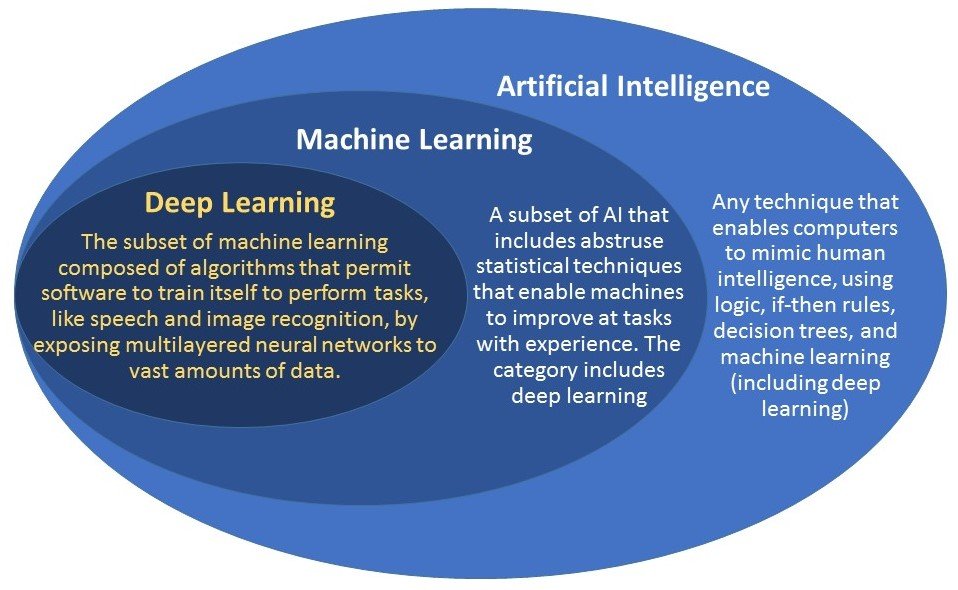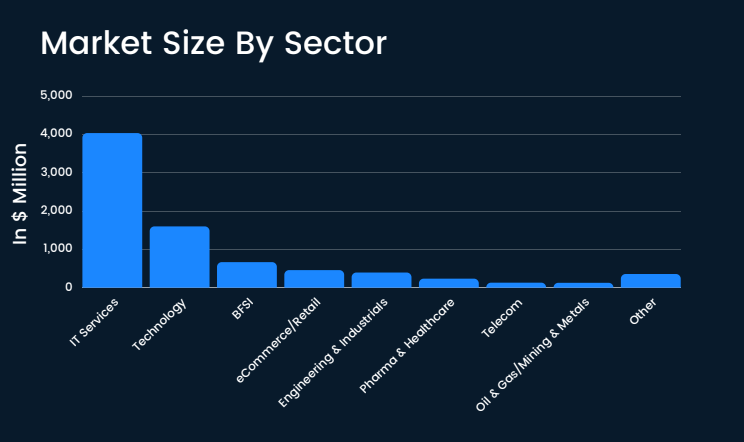ForumIAS announcing GS Foundation Program for UPSC CSE 2025-26 from 19 April. Click Here for more information.
Contents
- 1 Introduction
- 2 What is Artificial Intelligence?
- 3 What is the Scope of Applications of Artificial Intelligence?
- 4 What is the current status of Artificial Intelligence?
- 5 Why should India focus on Artificial Intelligence?
- 6 What are the challenges associated with Artificial Intelligence?
- 7 What steps have been taken by the Government towards Artificial Intelligence?
- 8 What more steps can be taken going ahead?
- 9 Conclusion
| For 7PM Editorial Archives click HERE → |
Introduction
Industry 4.0 is set to usher an era of technologies that will completely alter the way of human interactions with the surroundings. Artificial Intelligence, Machine Learning, loT, 5G, Augmented Reality, Big Data, Nanotechnology, Robotics, and 3D printing are transforming the operational, functional, and strategic landscape across various industries. In India, both private and public enterprises and the Union and State governments are investing in multiple Al use cases: from manufacturing to services. This shows that AI would be a critical catalyst for achieving robust economic growth in future. Hence focus must be on building an ecosystem which ensures affordability, accessibility and usage of AI by the masses.
What is Artificial Intelligence?
Artificial Intelligence (AI) is a way of making a computer, a computer-controlled robot, or software perform human-like tasks. The term was coined in 1956 by John McCarthy. It refers to the ability of machines to perform cognitive tasks like thinking, perceiving, learning, problem solving and decision making.
There are two subsets under the umbrella term AI: Machine learning and Deep learning
Machine Learning involves the use of algorithms to parse data and learn from it. This enables making a determination or prediction. Deep learning is a technique for implementing Machine Learning.
Source: IBM
What is the Scope of Applications of Artificial Intelligence?
Agriculture: Application of AI in agriculture can help in increasing crop yield by providing real-time advisory, early detection of pest attacks, prediction of crop prices, precision farming etc. e.g., Berlin-based agricultural tech start-up PEAT has developed a deep learning application called Plantix. It identifies potential defects and nutrient deficiencies in soil.
Healthcare: It can be used in diagnosis, treatment design, imaging diagnosis, early detections of disease outbreaks, robot assisted surgeries, virtual nurse assistants etc. e.g., Researchers at an Oxford hospital developed AI that can diagnose scans for heart disease and lung cancer.
Education: It can be used for developing tools for customized learning, interactive and intelligent tutoring systems, and predicting tools- for example predicting dropouts.
Urban planning: It can be used for optimizing infrastructure in cities, service delivery, crowd management, cyber security, public safety and water and waste management e.g., in Kerala, engineers have developed sewer-cleaning robots to put an end to manual scavenging.
Transportation: It can be used in developing AI-based traffic management systems including sensors, CCTV cameras, automatic number plate recognition cameras, speed detection cameras, and signalized pedestrian crossings.
Energy: AI can be used in energy system modelling, predictive analysis, demand and infrastructure management, renewable management, building energy efficient buildings, etc. e.g., a programme EWeLiNE developed in Germany can work as an early-warning system for grid-operators to assist them in calculating renewable-energy output over the next 48 hours using AI.
What is the current status of Artificial Intelligence?
India was ranked 8th in the top 10 countries by AI patent families ahead of Russia and France. AI-related patent applications grew tenfold from 2012 to 2018. India has over 1,300 Global Capability Centres (GCCs) and one in every five GCCs use AI across key business functions such as cybersecurity, customer services, supply chain, and operations management.
The Government expenditure on AI and Machine Learning has also steadily increased and is expected to reach USD 11,781.9 million in 2025.
As per the State of Artificial Intelligence Report, 2021, the Indian Artificial Intelligence market is valued at US$ 7.8 billion as of July – August 2021. This represents a 22% increase in market size over 2020.
There are close to 109,000 Artificial Intelligence personnel working in India across enterprises and sectors. This represents a 20% jump in personnel from last year.
Source: State of Artificial Intelligence in India Report, 2021
Why should India focus on Artificial Intelligence?
Economic Boost: According to NITI Aayog, Al has the potential to add US$ 1 trillion to the Indian economy by 2035.
Employment Generation: A report titled ‘Al Enabled SaaS: The Next Frontier for Global SaaS Start-ups from India’ highlighted that AI could generate over 9,00,000 white-collar jobs and 3.6 million indirect jobs by 2030.
Huge Generator of Data: India is the world’s largest generator of democratic data. It is the data which is being generated and analysed under the democratic rule of governance. This wealth of data gives India an advantage in many fields but the real value of this vast mine of data can only be extracted using effective Al and machine learning.
Boosting Technological Prowess: India is one of the largest smartphone manufacturers in the world, it has a new semiconductor programme, and its drone and robotics industries are some of the most exciting parts of its economy. India is also building quantum computing capability and chip-making prowess. India is also a world-leading destination for Software as a Service (SaaS) companies, and the growing use of Al and associated technologies can only boost India’s existing technological prowess.
Confidence shown by Investors: Most venture capital funding in India is now going to Al projects in Banking, Financial Services, and Insurance Sector (BFSI), e-commerce, healthcare, electronics and renewable energy startups. Nearly 200 Artificial Intelligence Start-ups in India are today innovating and creating AI-based solutions for various industries.
Success of Flagship Programs: It can complement Digital India Mission by helping in the big data analysis which is not possible without using AI. Similarly, ‘Make in India’ programme can be strengthened and help India in becoming a major manufacturing hub with AI-assisted technology.
What are the challenges associated with Artificial Intelligence?
First, a proper AI-based system requires a massive computational capacity, which means more data centers have to be created that requires huge investment.
Second, AI will increase digital exclusion in all spheres including the exclusion of societies and nations. Further, global Investment also likely to shift to countries where AI-related work is already established. Also, a report published in The Guardian highlighted how AI driven algorithms can be affected racial and gender stereotypes and thus lead to exclusionary decisions.
Third, there are fears that AI will result in less demand for human resources. It is not a good sign for India that has a huge proportion of young population. It will reduce desk jobs, such as accountants, financial traders, and middle managers.
Fourth, the most important concern with AI is the concern of data privacy. The AI algorithm will improve only with access to more data. It will lead to the constant utilization of our digital footprints with or without our knowledge. Scandals like Cambridge Analytica are an example of such a violation of privacy.
What steps have been taken by the Government towards Artificial Intelligence?
National Strategy for Artificial Intelligence: It was released by NITI Aayog in 2018. It lays out the roadmap for India to leverage the coming-of-age technologies to ensure inclusive growth and social development. It identifies 5 sectors for AI application to serve societal needs: Healthcare, Agriculture, Education, Smart cities and infrastructure and Smart mobility and transportation.
Responsible Al Approach Documents: It was published by NITI Aayog in collaboration with the World Economic Forum Centre for the next Al Industrial Revolution. The Documents seek to establish broad ethics and principles for the design, development, and deployment of Al in India.
Draft framework on the India Artificial Intelligence Stack: It has been released by the Department of Telecommunications and is focused on eliminating the barriers to AI deployment. It aims to enable an environment to exploit AI productively across all sectors and bring interoperability, among other things. The Stack is divided into 6 layers: 5 main horizontal layers and 1 vertical layer. Each layer caters to a specific purpose ranging from information gathering and storage to security and governance.
Incorporation of AI into governance: In Telangana, Al is helping authenticate pensioners and ensuring that payments go to pensioners who are alive thereby removing chances of graft. The Ministry of Corporate Affairs is using Al to simplify corporate filings, while the Centre for Artificial Intelligence and Robotics (CAIR) has been built as a special hub for AI-related work of the DRDO.
What more steps can be taken going ahead?
First, The proposed AI stack should be put into implementation. It will facilitate open API integration and build Al architecture from square one. It will also provide a balanced ‘playground’ for institutions to accelerate research and development in Al and ensure speedy adoption of Al across the value chain.
Second, The government should also focus on integrating AI with other new age technologies like Blockchain. This would enable solutions to longstanding policy challenges in domains like land transactions and medical record keeping.
Third, Countries have to develop broad-based ethical principles, cultures, and codes of conduct in utilizing AI-based systems. The principles not only include the “whole of society” approach but also include the “whole of world” approach, e.g., the UN Secretary-General’s Roadmap on Digital Cooperation. This focuses on multi-stakeholder efforts on global cooperation. Similarly, UNESCO has also developed a global, comprehensive standard-setting draft Recommendation on the Ethics of Artificial Intelligence.
Fourth, India should also pass the data protection bill and appoint an independent data regulator in order to prevent violation of privacy using AI.
Conclusion
The Artificial Intelligence market in India will continue to be the primary growth driver of the Data Science domain and the broader IT industry over the next few years. Keeping this in mind, India should take proactive steps to unleash the potential of Artificial Intelligence.
Source: Yojana June 2022, State of Artificial Intelligence in India






